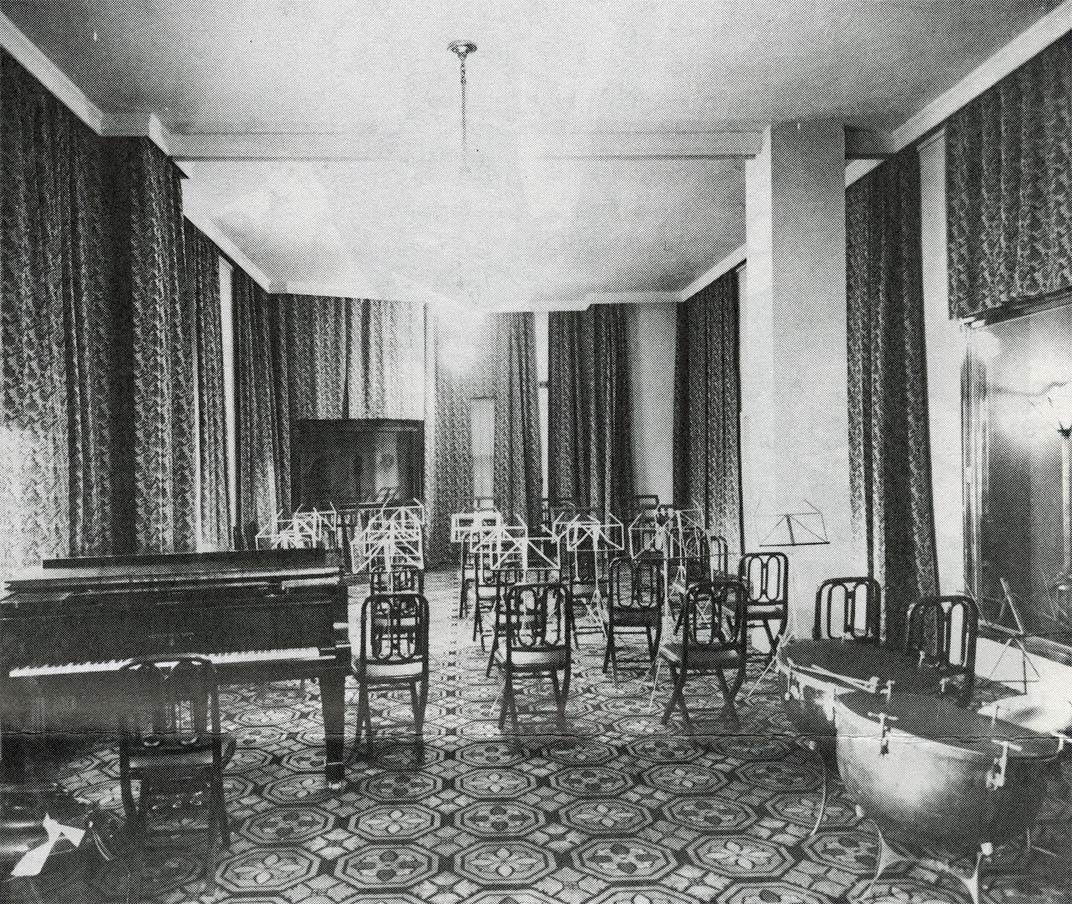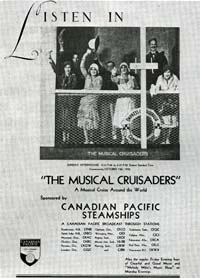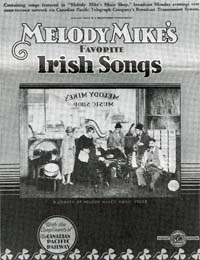|
|
Vol. 14
Number 8 June 13, 1984 |
 |

In an age of instant satellite-beamed communications and home video taping machines, it is hard to imagine a time when radio broadcasting was the
most exciting and innovative form of home entertainment, yet when Canadian Pacific became active in the field in the early 1930s, this was very much the
case.

The activities of the railway in the field of broadcasting were a natural development of the commercial telegraph system already operated across the country by Canadian Pacific.
In the United States such transmissions could be made over the telephone circuits of the American Telephone & Telegraph Co.'s wires, but in Canada the vast distances combined with a sparse population compelled the telephone company to lease the railway's lines.
In light of this, more than a million dollars was expended by the C.P.R. on the installation of a new "carrier current" system which was capable of transmitting 96 messages simultaneously over one pair of wires.
Originally, Canadian Pacific sponsored Friday evening radio hours featuring the dinner orchestra of the Royal York Hotel alternating with folk songs or light operas.
These programs were so successful in early 1930 that by mid-year they were being broadcast across Canada in all the major cities from Quebec to Vancouver.
So highly were they regarded that they were the first programs originating outside the United States to be accepted by the National Broadcasting Company.
By June, 1930, the Royal York Hotel in Toronto had established its own radio station on the top floor of its new extension, and the studios were reputed to be among the finest on the continent.
The design of the systems was carried out and installed by the Northern Electric Co. Ltd. (now Northern Telecom), and the project engineer was Sidney T. Fisher of Montreal.
The station call letters were, appropriately enough, CPRY and its slogan "cheerful and good music" continued to govern the programs.
A second set of studios was established at the Banff Springs Hotel where the Northern Electric Co. supplied and installed a Western Electric type 8-B speech input system.
From these studios Canadian Pacific sponsored programs were expanded to Sunday afternoons in order to present the "Musical Cruisaders", a musical party on the "Empress of Australia's" round-the-world cruise, illustrating with song and music the life on board a cruise ship and in the various countries visited.

By far the most popular show, however, was broadcast on Monday nights and was entitled "Melody Mike's Music Shop". The music shop was located at an imaginary railway divisional point called "Melody Junction" and was run by the proprietor, "Melody Mike".
The shop was the centre of numerous adventures in which Mike, Mary his wife, Ted and Larry, their sons, Scotty Macgregor, an argumentative but friendly neighbor, and Lack-a-day Liz, the most eccentric of the characters, all played parts.
The theme song was called "The Train" and was especially popular with children, and featured a locomotive bell and whistle sounds.
"I think your Monday evening broadcast of the doings of Melody Mike's Music Shop is just the niftiest half-hour program we receive", bubbled one listener, while another claimed, "there may be a more loveable or whimsical group of entertainers on the air than Melody Mike's, on yon point I'll no' argy wi' ye, but if there is, I have yet to hear it".
Hundreds of such kudos were received each week after a broadcast.
Unfortunately, the company did not stay in the broadcasting field for very many years.
When the Canadian government decided to emulate the British Broadcasting Company with the Canadian Broadcasting Corporation in 1936, Sir Edward Beatty, the company's president wished to avoid any political complications and decided to step out of broadcasting altogether.
The company's telegraph lines continued to be used for radio transmission and Canadian Pacific sponsored a half-hour program of folk music entitled "Canadian Mosaic", under the direction of their publicity agent, John Murray Gibbon.
Although this program continued to be a successful advertising medium, the company's commitment to broadcasting had ended, a mere six years after its pre-eminence in the field.
 and is reprinted here with their permission.
All photographs, logos, and trademarks are the property of the Canadian Pacific Railway Company.
and is reprinted here with their permission.
All photographs, logos, and trademarks are the property of the Canadian Pacific Railway Company.